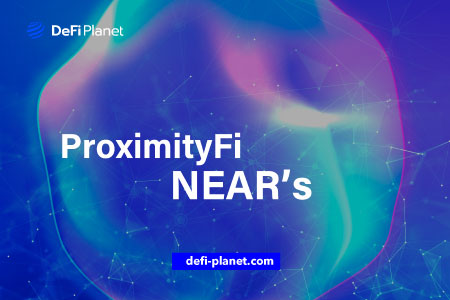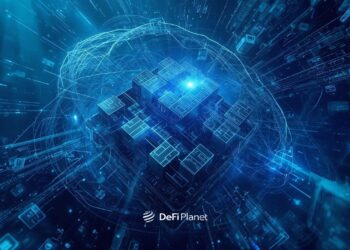Last updated on November 17th, 2022 at 01:28 pm
Although the NEAR protocol is a newcomer in the Web3 arena, it brings a wealth of technological advancements that prioritize user experience. Nightshade, its innovative scalability solution, is at the heart of these initiatives.
Nightshade employs a novel sharding protocol that, in the long run, will result in a “fully-sharded” network.
This guide will explain why blockchain scalability is important, existing scalability solutions, and how NEAR’s Nightshade will disrupt DeFi.
A Recap of the Scalability Problem
The scalability issue arises when blockchains attempt to serve an increasing number of users while still performing their intended function.
Maintaining scalability is challenging because a perfect blockchain must simultaneously maintain decentralization and security. The “blockchain trilemma” is a phrase coined by Ethereum co-founder Vitalik Buterin to describe this issue.
This trilemma does not apply to networks with a small user base because the network can handle the volume of transactions faster than they are generated.
However, as blockchain technology grew in popularity, networks struggled to keep up with the volume of transactions submitted for processing. This eventually resulted in increased network congestion and transaction fees.
The current throughput limits for Bitcoin and Ethereum, the two most popular cryptocurrencies, are 6 tps and 20 tps, respectively. Compare that to VISA’s processing speed of 20,000 transactions per second.
Obviously, if the blockchain-powered DeFi ecosystem is to achieve its goal of becoming the preferred channel for global payments, it must figure out how to handle a much higher rate of transactions per second (tps).
An Overview of Scalability Solutions
Sharding
Many solutions to the scalability problem have been proposed, and numerous new networks have emerged in response. Scaling solutions can be divided into two broad categories: vertical and horizontal.
Vertical scaling, which seeks to accelerate a network operation, aims to use more memory and processing power on existing nodes. Horizontal scaling aims to increase the number of nodes in a network.
Sharding has been adopted as a horizontal scaling solution by several blockchains.
“Shards” are groups of network nodes that collaborate to process transactions. This means that instead of storing all the data in the network, nodes only need to store the data assigned to them in their shard. They then update the rest of the network about the transaction’s outcome.
Before the introduction of sharding, each node in a blockchain had to keep its own copy of the entire network’s data set. Although this solution is highly secure, it only allows a single computer to access the network’s bandwidth and storage space.
Sharding increases the network’s computing power beyond that of a single machine by utilizing multiple computers.
Simple Nightshade
Nightshade will be released in stages, with new features and functions being added until the network is “fully sharded” in the final stage.
NEAR refers to the first stage of this process as Simple Nightshade. Simple Nightshade can shard the blockchain state but not the computation.
While validators continue to process each transaction independently, the network has been divided into four distinct “shards.” Simple Nightshade’s mode of operation allows transactions to take more paths, reducing bottlenecks and increasing throughput.
Chunk-Only Producers
Once Simple Nightshade is released, NEAR will add “chunk-only producers” to its arsenal of tools. Chunk-only producers make it easier for members of the NEAR community to participate in the consensus process and become validators.
This is achieved by allowing users who don’t have the required NEAR tokens to run a validator node and create blocks, or “chunks,” that are specific to a shard.
This novel approach contributes to the further decentralization of the NEAR network by inviting a much larger set of validators to participate in network security.
Furthermore, by facilitating chunk-only producers, NEAR helps deliver on its promise to prioritize usability. This is accomplished by removing barriers that prevent ordinary people from participating in validation.
Average users will be able to set up a node with simple hardware or a cloud service provider and start earning rewards.
Nightshade
Nightshade implements a fully sharded network in which both the state and processing are distributed across multiple nodes. This further reduces the hardware requirements for running a block producer on NEAR, as validators won’t have to keep track of all the shards in the network.
By inviting a much larger population to participate in the network’s validation process, NEAR makes significant progress toward mass adoption. They help to spread out the network while also strengthening its defences.
Dynamic Resharding
Nightshade is currently in its third stage of implementation, which NEAR refers to as “Dynamic Resharding.” NEAR will be able to split and merge shards on the fly to optimize for usage and capacity.
This enables NEAR to scale to nearly infinite levels if necessary and to handle sudden, unexpected spikes in network traffic. Despite the success of Dynamic Resharding, NEAR is not resting on its laurels and intends to continue innovating to make its ecosystem more accessible and user-friendly.
Increasing access leads to even more decentralization, which strengthens security. This is consistent with the goal of developing more decentralized and secure technology.
Impact of NEAR’s Nightshade on DeFi
Finality
The term “finality” refers to the amount of time it takes for a transaction to be received by its intended recipient and recorded in the blockchain. NEAR is undergoing a major upgrade with the release of Simple Nightshade to address the scaling required for widespread adoption.
While the NEAR finality time of 1-2 seconds stays the same, the blockchain now has the capacity to process significantly more transactions in that time.
If the network ever became as busy as Ethereum’s, Nightshade’s sharding strategy would increase the number of transactions that occurred in that 1-2 second time frame. This would prevent transactions from progressing to the next block and slow down the network.
This sounds fantastic, and it bodes well for DeFi’s future. Decentralized banks using NEAR’s finality will have a significant advantage over the current financial system.
Faster Transaction Time
Simple Nightshade not only reduces block time and finality exponentially but also demonstrates how DeFi and crypto, in general, can achieve transaction speeds that compete with those of traditional financial systems.
Since the release of Simple Nightshade, NEAR’s minimum throughput has increased to between 2500 and 3000 transactions per second (t/ps). Because t/ps increases inexorably, there is no limit to its potential value.
All DeFi’s services based on NEAR will experience instant settlement, allowing the network as a whole to be truly scalable for a large number of people.
Influence of Chunk Producers
As previously stated, chunk producers are validators that only work with blocks from a single shard and can do so with few resources. The importance of such a function cannot be overstated. Currently, most networks where DeFi products and services are used are managed by individuals using expensive, specialized computers.
It may not be easy to grasp the significance of chunk producers to DeFi, but their impact is far-reaching. This capability, which can be used by any DeFi project built on NEAR, will facilitate fundamental changes such as improved DeFi governance. Decisions will no longer be made primarily by those with large sums of money and powerful computers but by regular people using cryptography.
Wide Adoption
DeFi can’t be “DeFi” without sharding. DeFi will only work at a small fraction of its full potential without sharding. Each time one of the networks experiences a major speed bottleneck, its shards could be increased. Sharding could accelerate DeFi and crypto transactions to speeds on par with or faster than the fastest payment networks available today.
NEAR provides a more environmentally friendly system by employing the optimum number of validators (rather than the maximum) with minimal hardware by design and keeping emissions generally low.
Furthermore, climate-related decentralized applications (dApps) like Open Forest Protocol and other cutting-edge sustainability projects will continue to compensate for any emissions NEAR may produce.
In Conclusion,
- NEAR is a blockchain (modelled as a single Layer 1) that can scale infinitely in both size and speed thanks to its sharding architecture. Shards on NEAR are not separate chains but single or multiple smart contracts that can execute in more optimized environments if desired.
- True cross-shard composability is made possible by using an asynchronous base layer execution that relies on a shared Layer 1 for data, which eliminates the need for third-party liquidity providers, bridging liquidity, fragmented liquidity, extra network relayers, a stressful developer experience, or a complex user experience.
- Scalability (coupled with cross-shard composability) provides users and developers with increased security, better usability, guaranteed instant finality, and access to consolidated liquidity across apps in a single transaction, among other benefits.
If you would like to read more articles like this, visit DeFi Planet and follow us on Twitter, LinkedIn, Facebook, and Instagram.
“Take control of your crypto portfolio with MARKETS PRO, DeFi Planet’s suite of analytics tools.”





















